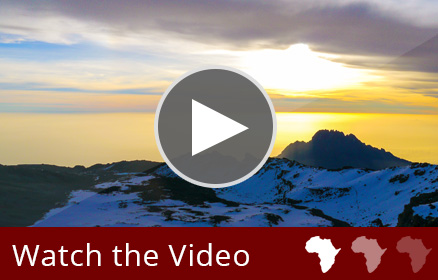The history of Mount Kilimanjaro
Mount Kilimanjaro’s three peaks were formed after volcanic eruptions millions of years ago. One volcanic cone, Shira, is now extinct and eroded, while the other two, Mawenzi and Kibo, ‘melted’ together after subsequent eruptions. Kibo is now the highest with its famous Uhuru peak at almost 6000m above sea level.
There is no single explanation for Kilimanjaro’s name and there are many theories as to where it comes from. Local peoples have looked at Kilimanjaro with reverence and named it ‘Mountain of Greatness’ (Swahili) or ‘That which defeats the caravan’ (Chagga) or ‘White Mountain’ (Maasai). The Maasai have also called it the `The mountain of Water’, as it is the source of water for the area.
Mount Kilimanjaro history timeline
The following timeline might give an idea how Man and Mountain met…
1000 BC
Kitchen tools such as stone bowls hinted at cultures inhabiting the slopes of the mountain a millennium before Christ.
150’s
Ptoleny of Alexandria mentioned ‘lands … where barbaric cannibals lived near a wide shallow bay and where, inland, one could find a great snow mountain’.
600’s
Arab traders in the sixth centuries started dealing with essential merchandise such as slaves and ivory, but did not mention the mountain. This suggests they focused on the coastal regions and did not venture too far inland.
1300
Arab historian and geographer, Abu’l Fida speaks of a mountain in the interior that was ‘white in colour’.
1500’s
Portuguese explorers started arriving on the coast possibly with a view to acquiring some land. In 1519 Fernandes de Encisco said ‘West of Mombasa is the Ethiopian Mount Olympus, which is very high, and further off are the Mountains of the Moon in which are the sources of the Nile.’
1800’s
By now British explorers had started arriving, searching for the source of the Nile as well as other great lakes and rivers.
Soon after, German missionaries arrived with a mission holier than mere exploration. A German preacher advanced to a higher calling when Johann Rebmann tried to get up the mountain with 30 porters and an umbrella.
1889
German geology professor Hans Meyer was the first recorded person to stand on top of Kilimanjaro – only after his third attempt… He was quite unpopular with his crew as he was a firm believer in corporal punishment…
1909
Gertrude Benham (22) of London reached the top of Kilimanjaro, alone. Her porters, scared of melting snow thinking it was bewitched, chose to stay behind in an ice cave. It was thought she was ‘immune’ to mountain sickness.
1926
Pastor Richard Reusch found a dead leopard on the crater rim. A glacier was later named after him, the pastor.
1932
Construction of Kibo hut.
1939
58 visitors trekking up Kilimajaro.
1942
Volcanologist JJ Richard caused some alarm by verifying that Kilimanjaro is still active.
1957
University of Sheffield and the Tanganyika Geological Survey declared the volcano dormant and almost extinct.
late 1950s
Less than a thousand visitors visited the mountain annually.
1961
Tanganyika and Zanzibar united to become Tanzania. A torch was placed on the summit to celebrate independence. To celebrate the new country, the name of the peak was changed to ‘Uhuru’ peak meaning ‘freedom.
Mid-1990s
Kili’s guest list has increased to 11 000 visitors per year.
1999
A huge fire – presumably caused by squatters – consumed 70 ha on the upper slopes of Kili raging for five days. It was extinguished by villagers, park rangers and soldiers.
2006
A Tanzanian man climbed from Umbwe Gate to the summit and back in 9 hours 19 minutes. He carried all his gear and took a break to film himself at the top. He also had to stop twice to vomit.
2006/7
Kilimanjaro National Park Authorities (KINAPA) recorded 40 701 people on the mountain, the most popular route being the Machame route with 15 879 visitors.
2013
A hike in kilts, mountain biking to descend and paragliding off Mount Kilimanjaro, all in one year, with special permits of course.
2014
Swiss-Ecuadorian Karl Egloff has set a new speed record for climbing Kilimanjaro, completing the stretch to the summit and back in just 6 hours, 56 minutes and 24 seconds. He went up Umbwe route and returned via Mweka.










